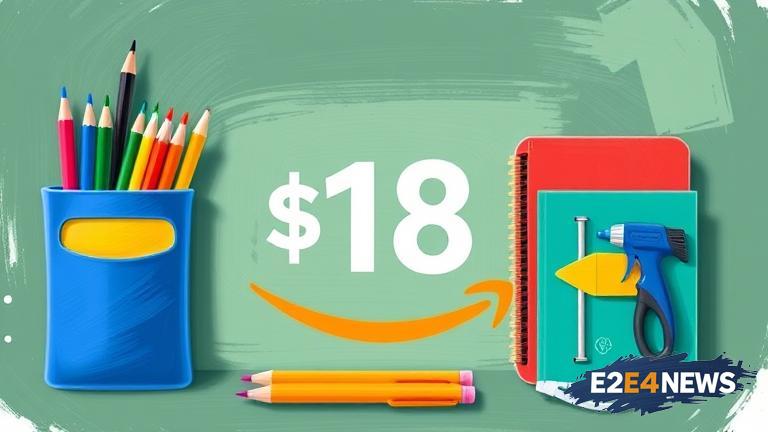Amazon has recently launched a new back-to-school supply kit, which has sparked controversy among parents due to its $18 price tag. The kit, which includes a range of basic school supplies such as pencils, pens, and notebooks, has been marketed as a convenient and time-saving solution for families. However, many parents have taken to social media to express their outrage at the cost, with some claiming that the same supplies can be purchased elsewhere for significantly less. Despite the backlash, Amazon has defended the price of the kit, citing the quality and durability of the supplies included. The company has also pointed out that the kit is designed to be a one-stop solution for families, eliminating the need to shop around for individual supplies. Nevertheless, the controversy surrounding the kit’s price has raised questions about the affordability of back-to-school supplies and the impact on low-income families. Some parents have argued that the high cost of the kit is a reflection of the broader issue of income inequality, with those who can afford it having access to better quality supplies. Others have suggested that the kit is a prime example of Amazon’s aggressive pricing strategy, which prioritizes profit over people. In response to the criticism, Amazon has offered a discount on the kit for Prime members, bringing the price down to $15. However, this has done little to quell the outrage, with many parents continuing to call for more affordable options. The controversy has also sparked a wider debate about the role of big business in education, with some arguing that companies like Amazon are profiteering from the backs of parents and students. As the back-to-school season gets underway, the issue of affordability is likely to remain a major concern for many families. With the cost of living continuing to rise, parents are looking for ways to cut costs without compromising on quality. In this context, Amazon’s back-to-school supply kit has become a lightning rod for criticism, with many seeing it as a symbol of the company’s prioritization of profit over people. Despite the controversy, Amazon remains one of the most popular destinations for back-to-school shopping, with many parents relying on the company’s convenience and wide selection. However, the backlash against the kit’s price has highlighted the need for more affordable options and greater transparency around pricing. As the education sector continues to evolve, it is likely that the issue of affordability will remain a major challenge for families and policymakers alike. In the meantime, parents are being forced to get creative in order to stay within budget, with many turning to second-hand stores, discount retailers, and online marketplaces to find affordable supplies. The rise of alternative suppliers has also been driven by the growing demand for sustainable and eco-friendly products, with many parents seeking out options that are better for the environment. As the market continues to shift, it is likely that Amazon will face increasing competition from rival retailers and startups looking to capitalize on the demand for affordable and sustainable back-to-school supplies. In conclusion, the controversy surrounding Amazon’s back-to-school supply kit has highlighted the need for greater affordability and transparency in the education sector. As families prepare for the new school year, it is clear that the issue of cost will remain a major concern, with many parents seeking out affordable and sustainable options. Whether Amazon’s kit will remain a viable option for families remains to be seen, but one thing is certain – the debate around affordability and accessibility in education is far from over.
